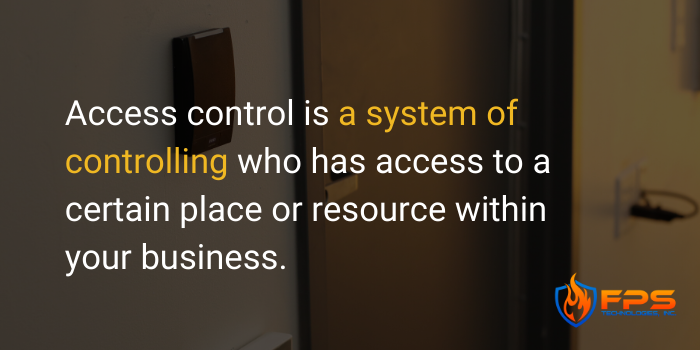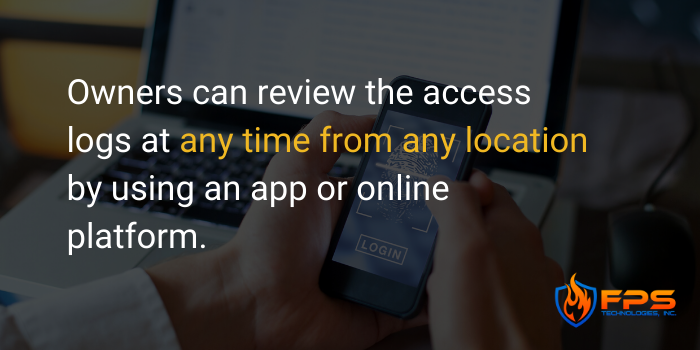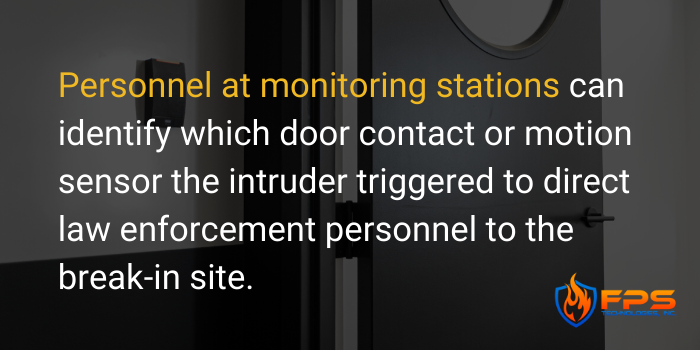Everyone knows what a security camera is, but what about access controls and detection systems?
A great security system is like a layered cake with a diamond ring baked inside — you have to eat a lot before you get to the prize. Similarly, the more layers of protection your building has, the longer it’ll take an intruder to infiltrate your property and get to your valuables.
In this article, we’ll share the primary differences between access control and detection systems, plus the reasons why you should have both.
What is an access control system?
Access control is a system of controlling who has access to a certain place or resource within your business. In online systems, it can be as simple as granting unique logins to each person. To gain physical access to certain areas of your property, a person would need a keycard or a fob.

Physical access controls are highly customizable. You can use them to restrict entry to any area of your business, from the main entrance to a single room. Access controls are commonly installed on exterior and interior doors, as well as gates around the perimeter of a building.
Businesses often set schedules that automate when entrances are open to employees and the public. For example, an office may set its front door access control to unlock at 7 AM and to lock again at 7 PM. To enter the office outside of those hours, an employee would need a special keycard or fob.
Access control systems also automatically log when an employee uses a fob or keycard to access restricted areas of the business. Owners can review the access logs at any time from any location by using an app or online platform.

What is a detection system?
Unlike access controls, detection systems don’t prohibit entry to certain areas of a property, but they do send alerts when there is an intrusion.
Often, businesses will have motion sensors or glass breaks tied to their detection system. If someone comes into the building, they’ll have a limited amount of time, often 30 – 60 seconds, to disarm the intrusion system. If the person is unable to disable it, either with the correct code in a keypad or an authorized keycard, the system alerts a monitoring station.
Personnel at monitoring stations can identify which door contact or motion sensor the intruder triggered to direct law enforcement personnel to the break-in site. Even if the person is out of view of the facility’s cameras, law enforcement or on-site security personnel will know which area of the property the intruder is in.

Businesses can also have detection systems for carbon monoxide, smoke, water leaks, or severe weather alerts.
Like access controls, detection systems are highly customizable. A business can have a motion detector in every room, or just monitor the main entrance.
Why you need BOTH systems
Access control seeks to prevent unauthorized access, while intrusion detection alerts a monitoring station to the successful infiltration of unauthorized persons. The two systems work hand-in-hand.
Having layered security forces an intruder to work harder to get to your valuable property or data. As they spend time fighting through your security gate and access controls, law enforcement or on-site security personnel have already received an alert from the intrusion detection system, which gives them more time to apprehend the person before he or she achieves full entry.
Both systems also give valuable feedback about a perpetrator’s location in your building. You can tell where they entered your property, and each motion sensor they triggered along the way.
Protect your property with a robust security system
If you’re interested in customizing a security system for your property, get in touch with FPS. One of our electronic safety and security experts can conduct a site survey and advise you on the best locations for cameras, access controls, and detection sensors. Then, we’ll install it and integrate it into a single, easy to use app or platform.
Get in touch with questions or to get started today.


